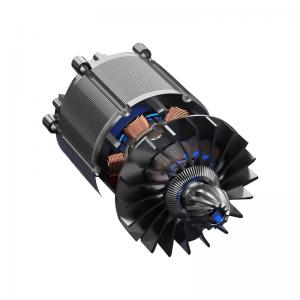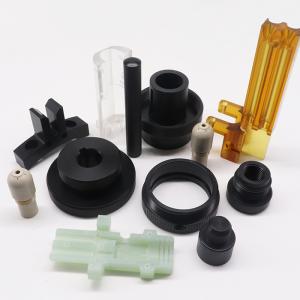CNC Machinable Material
CNC Machining Materials: Metals and Plastics
CNC machining is a versatile manufacturing process that can work with a wide range of materials. The choice of material significantly impacts the final product's properties, cost, and suitability for specific applications. Understanding the available CNC machining materials is crucial for making informed decisions.
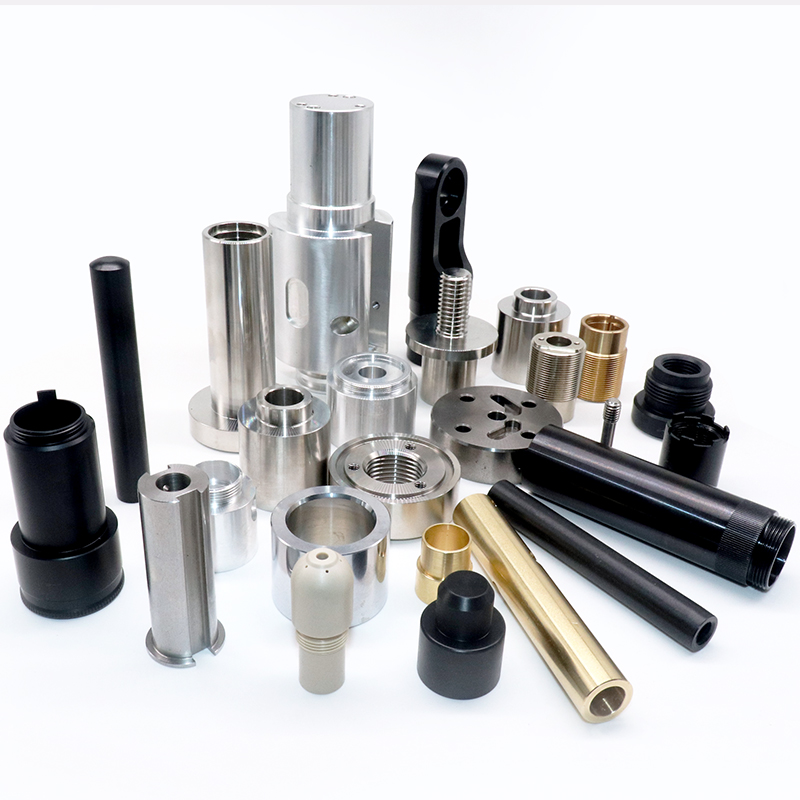
| Metal Material | Description | Common Applications |
|---|---|---|
| Aluminum | Lightweight, corrosion-resistant, and easy to machine. Common grades: 7075-T651, 6061. | Aerospace, automotive, electronics |
| Brass/Copper | Excellent conductors of heat and electricity, ideal for electrical components. Common grades: C360, C11000. | Electrical components, plumbing fixtures |
| Titanium | High-strength, low-density, ideal for aerospace and medical applications. Common grades: Titanium Grade 5. | Aerospace, medical devices, marine applications |
| Stainless Steel | Corrosion-resistant and durable, used in food and medical industries. Common grades: 304, 316. | Food processing, medical equipment, architectural components |
| Carbon Steel | Strong and affordable, used for structural components. Common grades: 45#, T10A. | Structural components, heavy machinery |
Our metal parts demonstrate the versatility and complexity of our metal manufacturing capanilities. From intricate shapes to precise tolerances, we can produce high-quality metal components tailored to your specific needs.
Aluminum Alloy Parts
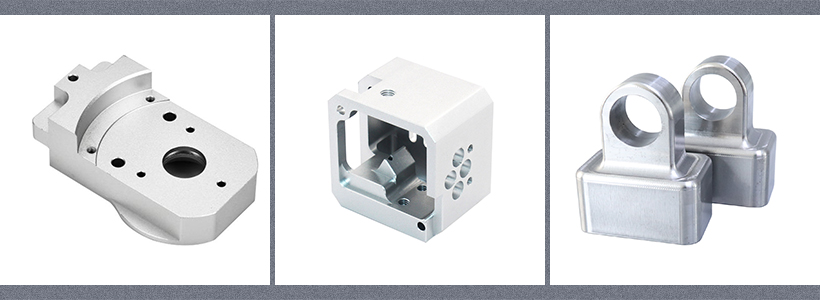
Brass/Copper Metal Parts
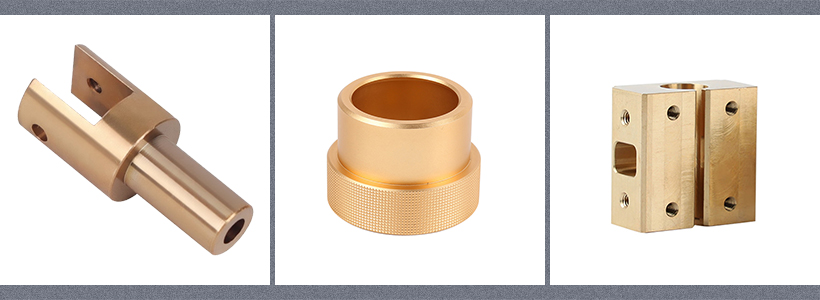
Stainless Steel Parts
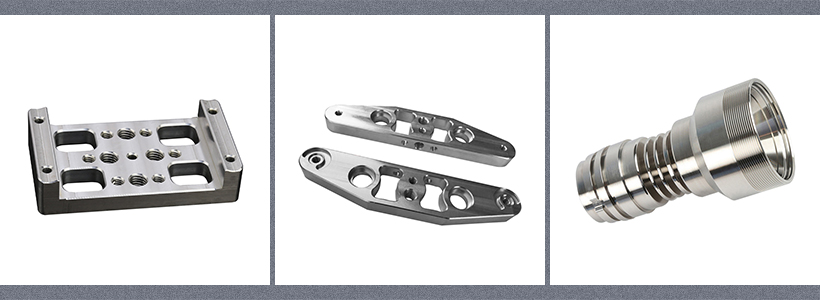
Carbon Steel Parts

Machinable Plastic Materials
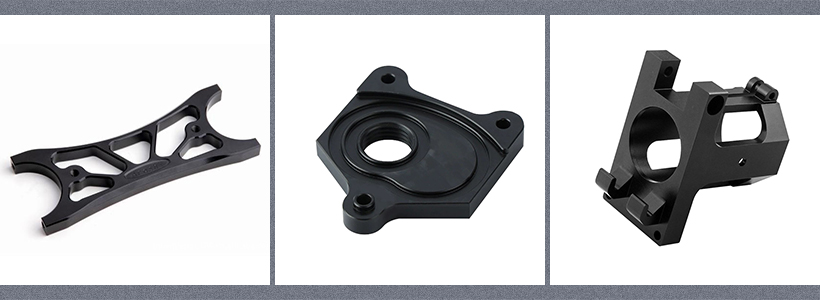
-
•
PC (Polycarbonate): Tough, transparent, and heat-resistant.
-
•
POM (Polyoxymethylene): High-strength, wear-resistant, and self-lubricating.
-
•
PA (Nylon): Tough, abrasion-resistant, and absorbs moisture.
-
•
PP (Polypropylene): Lightweight, flexible, and chemically resistant.
-
•
PTFE (Teflon): Non-stick, chemically resistant, and low friction.
Choosing the right CNC material involves balancing factors like strength, machinability, and application-specific requirements. Whether you need metals or plastics, understanding these materials' properties is essential.
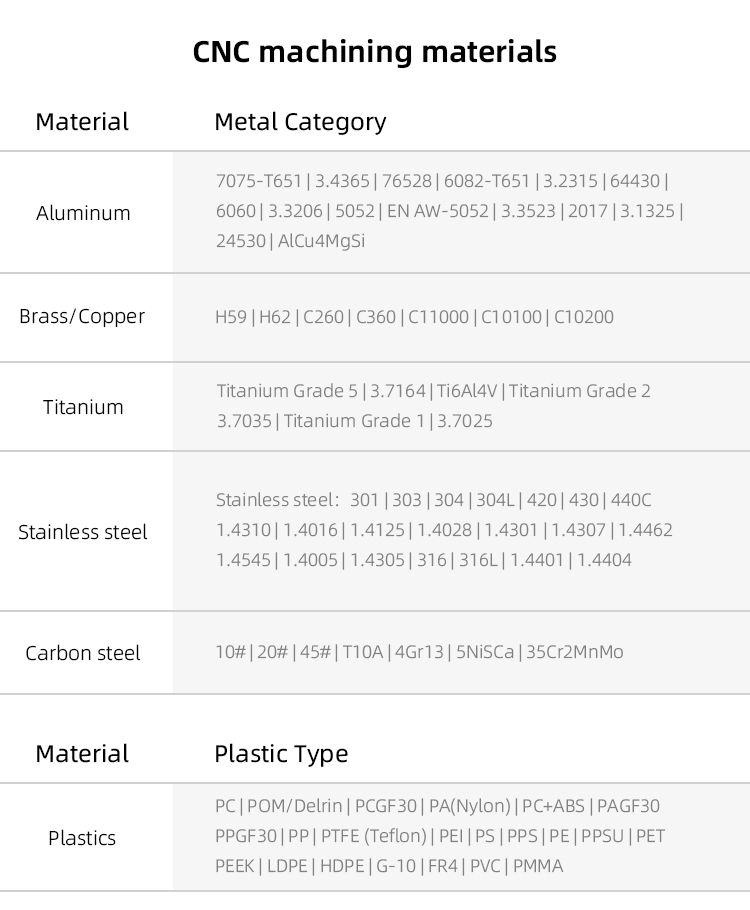
![Aluminum 6061 vs 6063: Key Differences in CNC Aluminum Machining [2024 Guide] Aluminum 6061 vs 6063: Key Differences in CNC Aluminum Machining [2024 Guide]](/Uploads/news/677e3a8d147f1.jpg)



